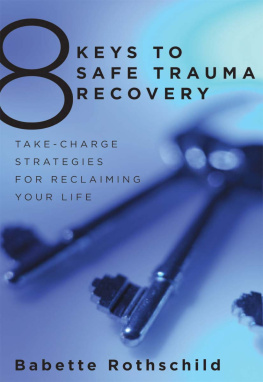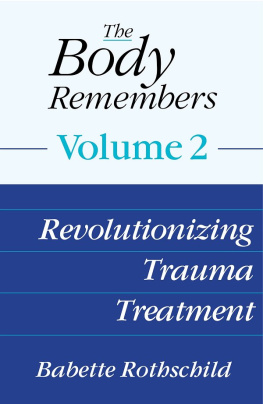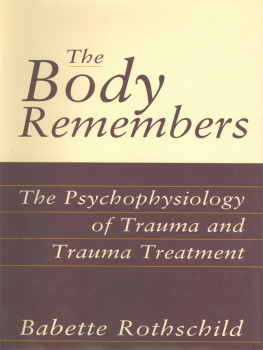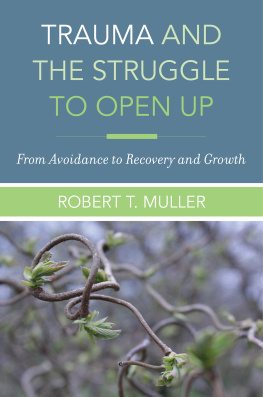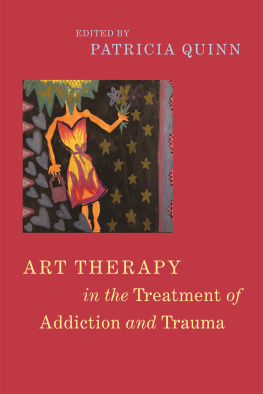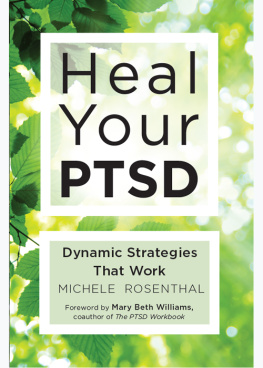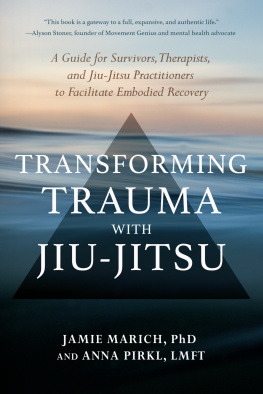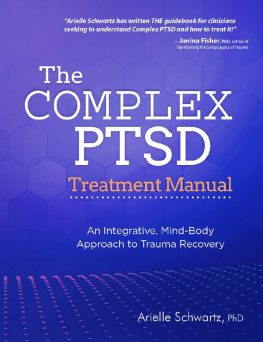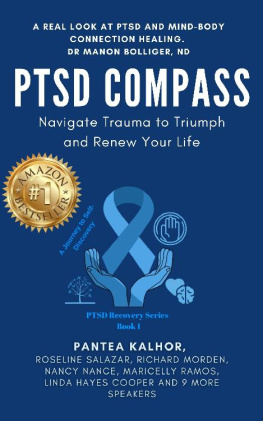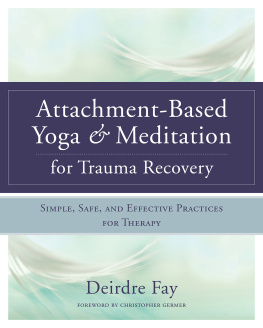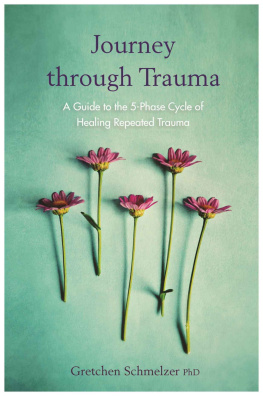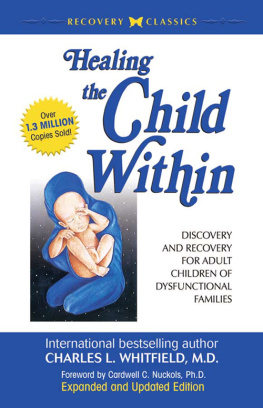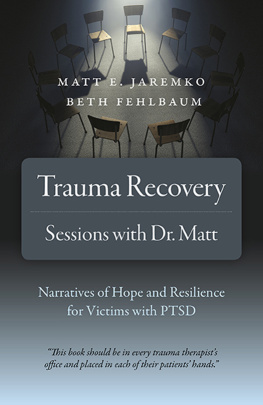ALSO BY BABETTE ROTHSCHILD FROM W. W. NORTON
8 KEYS TO SAFE TRAUMA RECOVERY
Take-Charge Strategies to Empower Your Healing
BABETTE ROTHSCHILD

W. W. Norton
New York London
Contact the author at:
Babette Rothschild
PO Box 241783
Los Angeles, CA 90024
310.281.9646
babette@8keys.cc
Visit Babettes Web site at http://www.trauma.cc and the online Safe Trauma
Recovery community at www.safetraumarecovery.com.
Copyright 2010 by Babette Rothschild
All rights reserved
For information about permission to reproduce selections from this book, write to
Permissions, W. W. Norton & Company, Inc., 500 Fifth Avenue, New York, NY 10110
Library of Congress Cataloging-in-Publication Data
Rothschild, Babette.
8 keys to safe trauma recovery: take-charge strategies to empower your healing /
Babette Rothschild.1st ed.
p. cm.
Includes bibliographical references.
ISBN 978-0-393-70605-5 (e-book)
1. Psychic traumaTreatment. I. Title. II. Title: Eight keys to safe trauma
recovery.
RC552.T7R68 2010
616.85'21dc22 2009028476
W. W. Norton & Company, Inc., 500 Fifth Avenue, New York, N.Y. 10110
www.wwnorton.com
W. W. Norton & Company, Ltd., Castle House, 75/76 Wells Street, London W1T 3QT
This book is dedicated to the memory of
Lone Reimert
and
Lennart Ollars
Beloved therapists and teachers from my 9 years of study,
work, growth, and adventure in Denmark. Thank you for your
enduring support and for enabling me to recover fromand
learn so much abouttrauma from the inside out.
Contents
Preface: Common Sense and Trauma Recovery
C ommon sense is the foundation of everything I write and teach, and has become a popular topic at my trainings. Merriam-Websters 11th Collegiate Dictionary defines common sense as sound and prudent judgment based on a simple perception of the situation or facts. As straightforward as it sounds, common sense can be very difficult to nail down and apply. In fact, one of my closest friends, Michael Gavin (in London), often reminds me that common sense is not very common. Unfortunately, I have to agree with him, particularly when dealing with trauma.
Questions have burned in me during and since my own recovery from PTSD and throughout my professional studies: Why did the route to my healing have to be so brutal at times? Having suffered during the trauma, was it really necessary to suffer again while attempting to heal from it? Why did it seem that dealing with the effects of trauma involved nearly the same level of terror and distress as the original events? My own common sense screamed that there must be additional options for trauma recovery, ways to make it safer and less traumatic.
Primarily, it is my aim to reduce the trauma of self-help recovery and trauma therapy. It is of concern to me that so many people find, as I did, healing from trauma to be as horrendous asor sometimes even more horrendous thanthe actual in Most traumatic events last a relatively short span of time, but their wounds can fester for a lifetime when recovery options are unavailable, limited, or misapplied.
After many years of working with traumatized clients, supervising trauma professionals, reading the available trauma literature and research extensively, and dealing with my own past, I have concluded that the bottom line of trauma recovery involves only a few key issues:
- Recognition that the trauma survivor actually did survive the trauma
- Understanding that a flashback is a memory
- Self-forgiveness for not being able to prevent or stop what occurred
- Alleviation of shame
- Reducing recovery steps to manageable size
- Mobilizing the body out of a frozen or defeated state
- Extracting meaning or purpose from the trauma to better oneself and/or ones world
You may notice that remembering the trauma is not a part of this list. I question the regular practice of investigating and revisiting trauma memories over and over again. Most people assume this is necessary for everyone, but that goes against common sense. For some it is quite helpful, but for others it is disastrous. Moreover, processing the details of what occurred is not always (or even usually) necessary to resolve the other issues. In fact, people who recover from trauma on their own tend to have much less intense memory of their traumas and are free of the need to repeatedly remember or track down every detail. It is also significant to note that a good portion of trauma victims suffer a worsening of symptoms when encouraged or forced to remember their traumas.
There is a critical misperception that to recover from trauma, you must feel worse before you can get better. This is another belief that goes against common sense. If remembering makes someone worse, then they are likely to do best by avoiding their memories, at least as long as those memories hurt rather than heal. The goal of trauma healing must be to relieve , not intensify, suffering. Common sense requires improving quality of life to be the primary goal. Revisiting the horrors of the past should only be a part of the process when it serves this goal. That is not to say that trauma survivors should always feel good. That would not make any sense either. In recovering from any painful condition, there will be periods of discomfort. However, the discomfort of recovering from trauma must never compromise the individuals life quality or ability to function normally on a day-to-day basis.
A central principle of common sense I have always abided by is not to expect any two individuals to be alike. This includes traumatized individuals and their responses to recovery interventions. I would never expect one strategy to work exactly the same with two people. Recovery proceeds best when common sense is liberally applied to tailor any approach or program to the unique needs of each individual trauma survivor.
I have endeavored to fill this book with common sense and demystify the process of trauma recovery. I hope it significantly contributes to your supply of tools and confidence to manage and achieve your healing.
Acknowledgments
A few weeks before completing this manuscript, I had an enlightening cyber interchange with my Irish friend, Patricia Bourke, also named below for her helpful literary feedback. That day our text messaging had nothing to do with this book, but some point or other about which I was being persistent. She sent back a text calling me encouragable instead of incorrigible. At first I laughed, but then I became intrigued. She had invented a new word and I liked it. Fairly quickly, I decided it should mean someone who encourages and the first person who came to mind was my editor, Deborah Malmud, the most encouragable person I know. Actually, the definition easily applies to everyone I have worked with at W. W. Norton over the last decade, including Kevin Olsen, Elisabeth Kerr, Kristen Holt-Browning, Vani Kannan, Andrea Costella, Bev Benzeleski, Kathryn Pinto, and also Susan Munro and Michael McGandy, who have both moved on to other pursuits. I could not ask for a better editor or publisher or more support for my writing projects. I count them among my blessings daily.
Really, everyone who has helped me shape this book has been incredibly encouragable. I owe many, many thanks to those who took the time to read and critique the first and second drafts: Jeanne Ladner, David Grill, Robin Petro, Sima Stanley, Victoria Haviland, Patricia Bourke, Gillford dSouza, and Karin Rhines. This book is very much the better for their candid feedback.

